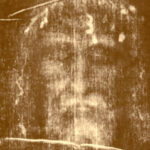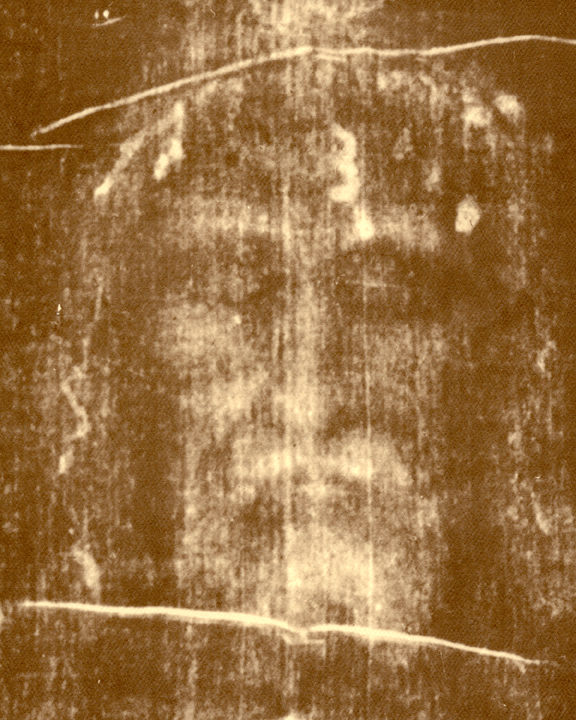 Pope Benedict XVI “all but gave an outright endorsement of the authenticity of the Shroud of Turin.” The shroud, which depicts the image of a man crucified in precisely the same way as Jesus, is on display in Turin cathedral for the first time in a decade, and 2 million people have made reservations to see it. The history of the shroud is fragmentary and hotly debated. Recent lab tests suggest that it is a medieval forgery, but true believers, including some scientists, continue to argue that the shroud is old enough to have been the grave cloth of Jesus.
Pope Benedict XVI “all but gave an outright endorsement of the authenticity of the Shroud of Turin.” The shroud, which depicts the image of a man crucified in precisely the same way as Jesus, is on display in Turin cathedral for the first time in a decade, and 2 million people have made reservations to see it. The history of the shroud is fragmentary and hotly debated. Recent lab tests suggest that it is a medieval forgery, but true believers, including some scientists, continue to argue that the shroud is old enough to have been the grave cloth of Jesus.
None of these doubts made its way into the pope’s address. He called the shroud an icon written in blood and said it testifies to the darkest mystery of faith—comments that make sense only if the blood on the shroud is in fact the blood of Christ.
Given the long history of the use of relics in the church, the pope’s approach is not surprising. From very early on, relics—bones of saints or objects associated with them—were venerated by the faithful, even if the clergy did not always endorse them. (A dispute over the use of a relic played a role in the beginning of the Donatist schism.) By the Middle Ages, relics were firmly entrenched in piety and, as a result, frequently manufactured. So the shroud could well be a medieval forgery.
Questionable authenticity, however, did not always dissuade people from relics. In perhaps the most famous case, three different medieval churches claimed to have the head of John the Baptist. Everyone knew that John had only one head, but everyone was also convinced that the head they venerated was the real thing. In a way it didn’t matter, because the point of relics was not only what they claimed to be but, more important, what they could do for the faithful. If the relic, for example, produced miracles of healing, it proved its power and authenticity.
So it is with the shroud. If it evokes feelings of wonder, devotion, and rapture, it has done its job for many pilgrims, and, as some of the comments in a CNN report indicate, the question of authenticity takes a back seat. (The effect is perhaps similar to that experienced by the diehard baseball fan viewing the objects on display in the Baseball Hall of Fame. The sports memorabilia phenomenon really is a modern, secular version of the medieval veneration of relics.)
This raises some questions. Is there anything different about this particular relic? Does the authenticity of the shroud matter for those who do not normally use relics? Would there be any advantage to us in having an object associated with Jesus himself?


Leave a Reply
You must be logged in to post a comment.